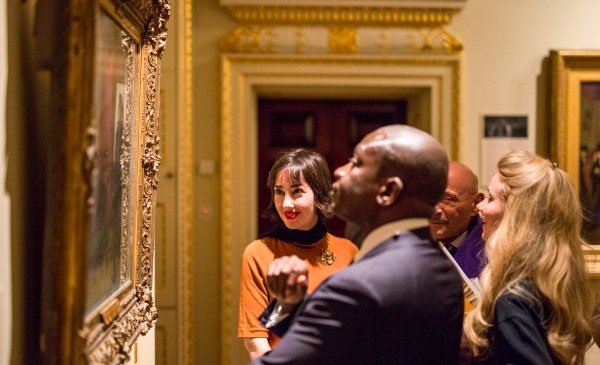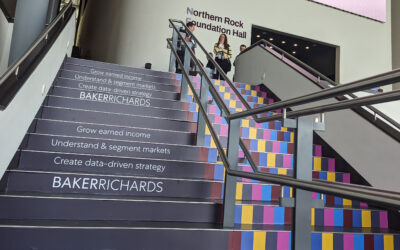Seeing the future
Without a forecast, there’s no roadmap for reaching your sales target. Forecasting is essential to measure the progress of sales against targets or budgets. So, rather than planning actions at the outset and hoping for the best – or firefighting at the last minute – you can actively manage your marketing and pricing. By implementing appropriate tactics in response to sales – whether good, bad or as expected – you will maximise sales and income. So where can you start? The “four Ps of prediction” can help…
“Prediction is very difficult, especially if it’s about the future.”
So said Nils Bohr, Nobel laureate in Physics. Forecasting attendances or ticket revenues in the arts is especially difficult, because so many factors that determine how sales will go are subjective or just plain unknown: Just how popular is that music? Just how famous is that actor? What else will be in town that week?
There is then the type of forecast itself. Usually, there is more value in forecasting the shape and speed of expected sales, not just a final sales number. This lets you plan marketing, pricing and discounting tactics to respond as sales progress – whether they are tracking above or below the curve. But, of course, that’s even harder to predict.
Here are what we like to call the ‘four Ps of prediction’.
Past evidence
If you have a box office system, you may be sitting on a rich evidence base. Which variables make the big differences to how your events sell? Day of the week, title, position in the season, artist, conductor? All of those?
There are a wide range of techniques and tools out there to help you analyse which are most important for you, from ‘black box’ statistical software to tools like the RMA that you can use yourself.
Often it’s helpful to develop a scoring system, grouping events from most to least popular according to some subjective criteria (read about event coding at the LA Phil). Whichever approaches you use, the aim is always the same: to decide which past events will make good comparators for the forthcoming event you need to forecast.

The Royal Academy of Arts commissioned us to build a forecasting model to help make informed decisions about future exhibitions. The model uses historical attendance patterns to create comparator demand curves for future exhibitions. The key variables to be taken into account in its case included demand from key visitor groups, such as its Friends, and the exhibition type (Blockbuster, Summer Exhibition, Word of Mouth and Special Interest). In the model, the Royal Academy team can filter on a range of criteria and get daily sales targets for future exhibitions.
Precision (degrees of)
There are a couple of precision-related questions. How accurate is that data bank you’ve built up? Did you filter out anomalies like cancelled or gala performances? The bigger question, though, is how specific a forecast do you need to create?
Beware falling into the trap of Spurious Accuracy, like the museum guide who was asked how old one dinosaur skeleton was. “One hundred million years and eighteen months,” he said. “How on earth do you know that?” asked the visitor. “Because my predecessor told me it was 100 million years old, and that was eighteen months ago.”
We can all be guilty of trying to make our numbers very precise, when actually all that does is make them less likely to be true. A target based on a really small specific evidence base is less robust, and useful in far fewer situations in the future, than a broader one based on a large evidence base.
Purpose
What is this forecast for? What do you need to do with it? For example, consider whether your aim is one of the following:
- To try and really accurately predict the shape of the sales cycle for every single performance or day.
- To use as a general baseline across a whole season.
- To alert you to opportunities for dynamic pricing. For example, to increase prices on anything that moves x% above this curve.
- To reflect an ambitious target to try and meet.
For the first, you’d want past comparators as genuinely comparable to each of the forthcoming events as possible. For the last, you’d deliberately choose better selling comparators, but this last one is a target and not a forecast. The two often get conflated, especially when planning a season or seeking match funding, but really a target is what you want to happen, and it may (even should) be ambitious. Whereas a forecast should say what is likely to happen, based on evidence.

Good forecasts can be used for much more than predicting income. The Stratford Festival (a major multi-venue festival in Canada) uses the Revenue Management Application for setting forecasts and tracking sales against them. This is partly for managing dynamic pricing, thus increasing their income, but also helps with administrative and logistical issues.
Due to its out-of-the-way location, the festival offers shuttle buses from the nearest transport hubs, which means it needs to make sure it hires the right number of buses for the sales levels each day. The sales manager has an alert set up in the RMA to tell her when she’s dipping a certain amount below forecast or surging a certain amount ahead. This quite literally gives her the message “book more buses” or “cancel a bus”.
The present
Monitoring, whatever tool you choose to do it, is key. Are you ahead of the curve? Is there an action to be taken? Was your forecast good or should you revise your expectations? A forecast that you never evaluate is a missed opportunity.
The more you forecast, the more knowledge you’ll gain. That’s what good forecasting means; arming yourself with the right past evidence, to the right degree of precision, to meet your purpose. All leading to a more profitable present – and future.




